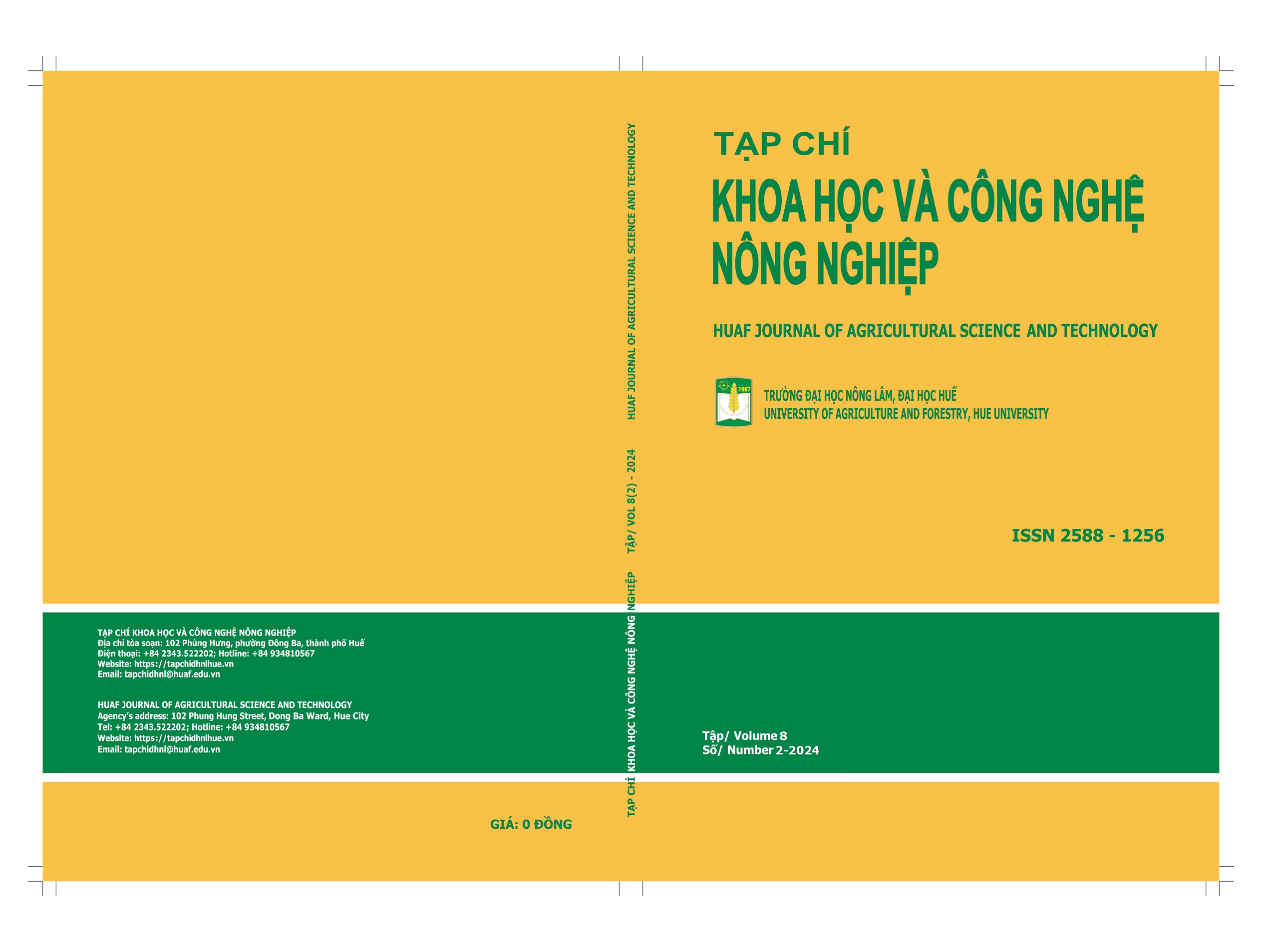##plugins.themes.huaf_theme.article.main##
Abstract
The study aimed to determine the most appropriate amount of microbial organic fertilizer and planting density for growth, yield, and economic efficiency of rice bean (Vinga umbellata (Thunb.) Ohwi & Ohashi). The experiment included 4 doses of the organic fertilizer, such as 0 (control), 1, 2, 3 tons per ha, and 3 planting densities of 15, 20, and 25 plants per m2, arranged in split-plot with 3 replications in the spring crop season of 2023 on the discolored gray soil at the Center for Agricultural Research and Services, University of Agriculture and Forestry, Hue University. Research indicators are based on the collection sheets, description and assessment bean genetic resources of Center of Plant Resources, issued in 2012. The results showed that the doses of microbial fertilizer of 2 to 3 tons per ha and the planting density of 20 to 25 plants per m2 were the most appropriate for the rice bean grow well and achieve high productivity (> 9.0 tons per ha). Economic profit (30.32 million VND per ha per crop) and VCR (Value Cost Ratio) were highest (2.80) at the treatment with a fertilization doses of 2 tons per ha and the planting density of 20 plants per m2. Therefore, it is initially recommended to use a microbial organic fertilizer amount of 2 tons per ha and a planting density of 20 plants per m2 for rice bean on the discolored gray soil in Thua Thien Hue province.

